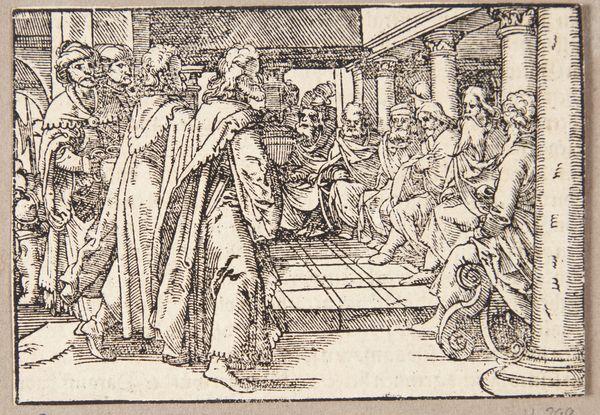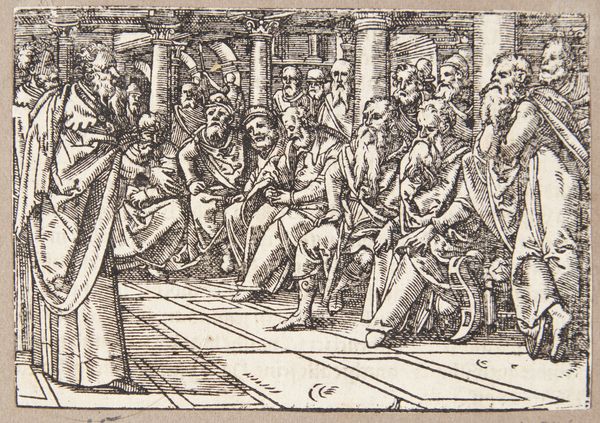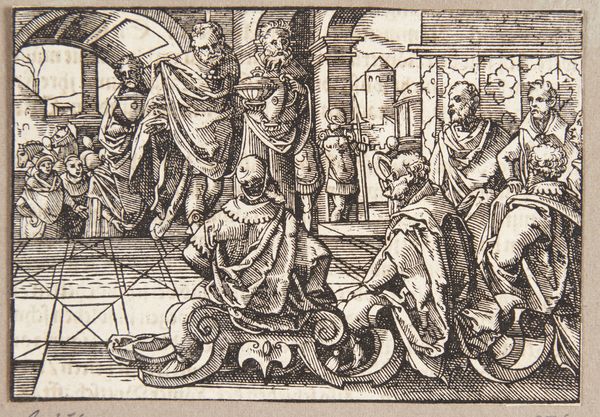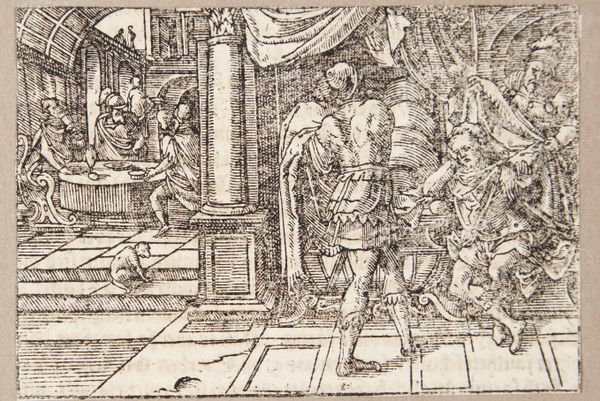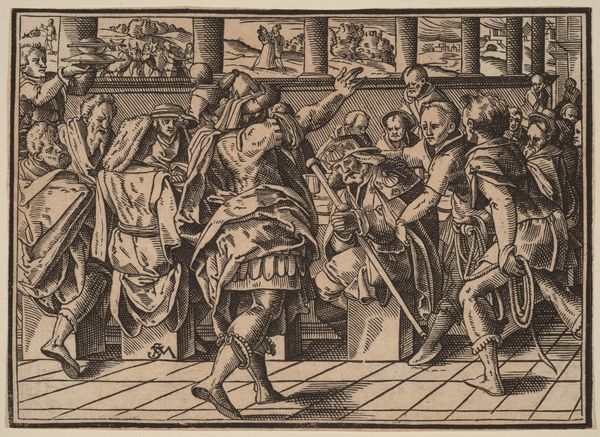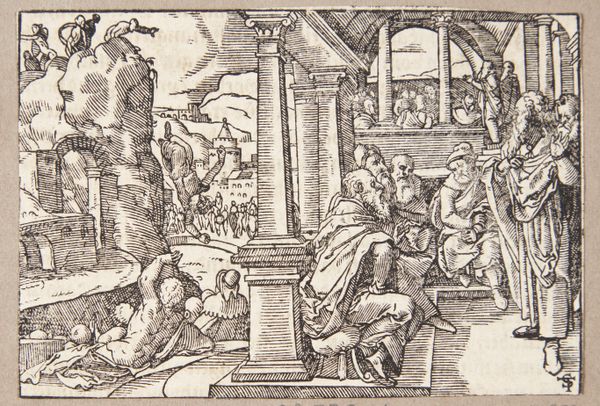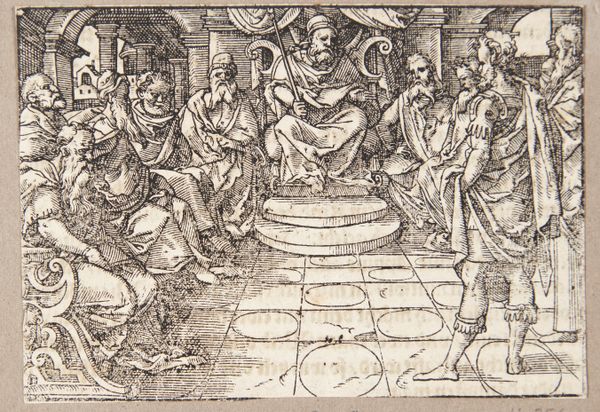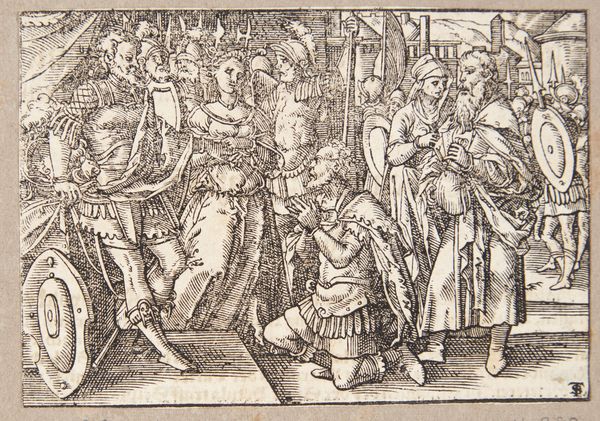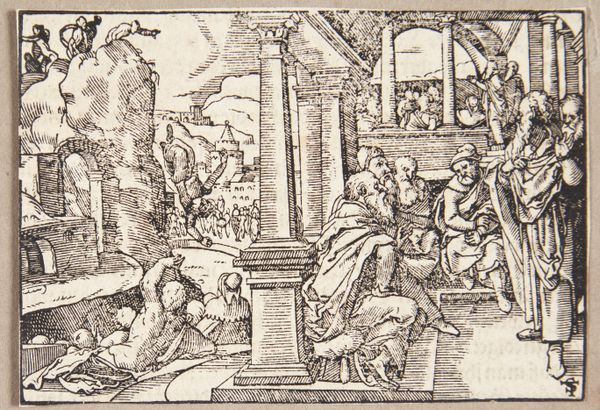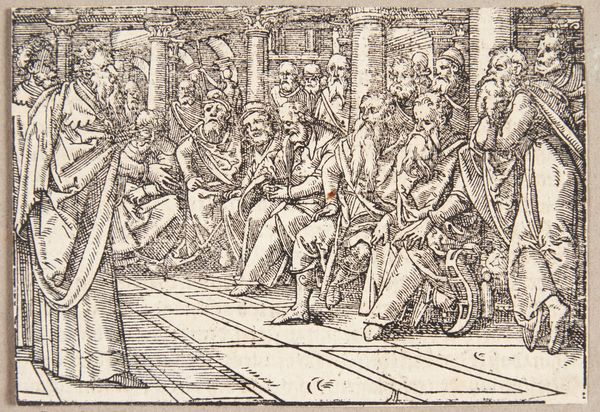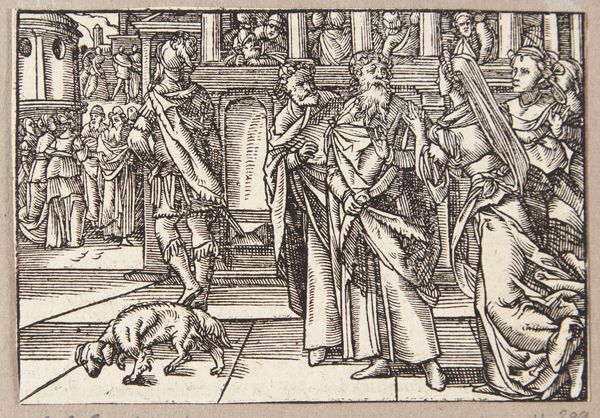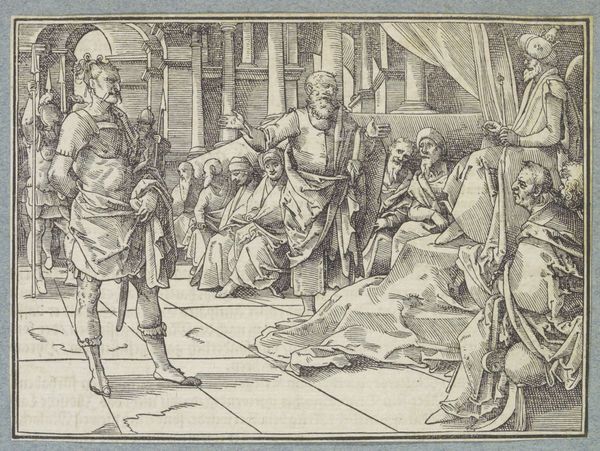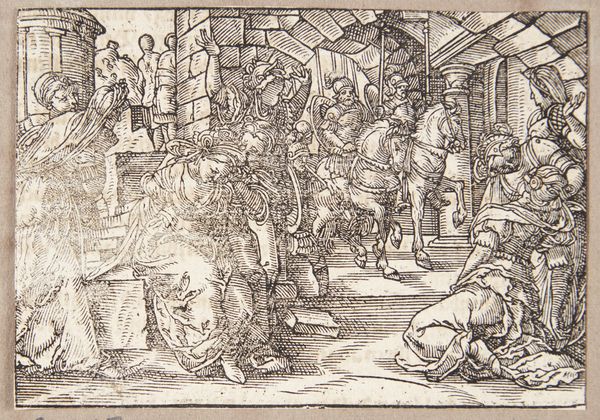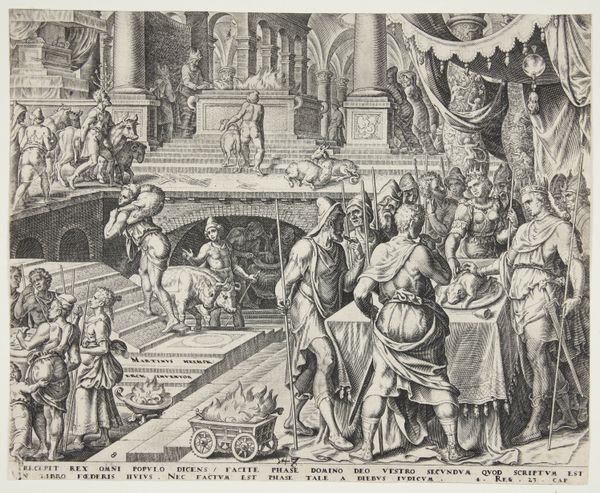
drawing, print, ink, woodcut
#
drawing
# print
#
figuration
#
11_renaissance
#
ink
#
woodcut
#
pen work
#
history-painting
Dimensions: 75 mm (height) x 105 mm (width) (bladmaal)
Curator: Look at the intense concentration on those faces! Editor: Indeed. What we’re seeing here is "Ptolemaios' ambassadører i Rom" - Ptolemy's Ambassadors in Rome - created by Tobias Stimmer in 1574. It’s a woodcut, a print, made with ink on paper. Curator: The level of detail achieved with just line work is quite remarkable. Notice the textures, the variations in density creating shadows, all dependent on the skilled carving and printing. It’s labor intensive. One block, one color, printed, then the process repeated for any additional color… except here the artist achieves quite an impressive picture using only black and white! Editor: And what that "picture" communicates is a fraught political scene. These ambassadors are, presumably, bearing gifts, bringing tribute to the leaders in Rome. Consider the power dynamics. Who are these people? How might race, gender, and political affiliation shape their experiences in such a setting? It’s about dominance and subservience, the negotiation of cultural capital. Curator: Right, we have men standing versus men sitting, which signifies power. I also notice the textile. The detail on those robes are exquisite, wouldn't you say? And the objects! What are they? We might investigate trade, consumption, the movement of luxury goods during the Renaissance... Editor: Certainly. The architecture also speaks to this era’s power and opulence, drawing from classical aesthetics to justify their actions. The print isn’t just about aesthetics or artistry, it is evidence of a cultural agenda. Curator: I see the pen work clearly here in this print, it is something to celebrate as a feat of labour to admire its quality of materials and construction as much as its historic value. Editor: Agreed. This artwork allows us to consider the legacies of imperialism and inequality still reverberating today. It invites contemplation on power, politics, and the enduring echoes of historical interactions. Curator: It really does prompt a profound consideration of materiality, and meaning behind such material constructions. Editor: Exactly, now and then.
Comments
No comments
Be the first to comment and join the conversation on the ultimate creative platform.
